你可能不知道的.Net Core Configuration
目录
执行原理
环境变量
Spring Cloud Config Server
挂卷Volume
Config Server vs Volume
执行原理
1. 配置读取顺序:与代码先后顺序一致。
public Startup(IHostingEnvironment env) { var builder = new ConfigurationBuilder() .SetBasePath(env.ContentRootPath) .AddJsonFile("appsettings.json", false, true) .AddJsonFile("cussettings.json", false, true); Configuration = builder.Build(); }
以上代码会先读取appsettings.json,再读取cussettings.json,cussettings.json的内容会覆盖appsettings.json的内容。
2. 覆盖逻辑:原有的配置继承,相同的配置覆写,新增的配置添加。
appsettings.json:
{ "settings": { "name": "AppSetting", "age": 20 } }
cussettings.json
{ "settings": { "name": "CusSetting", "gender": "Male" } }
结果:
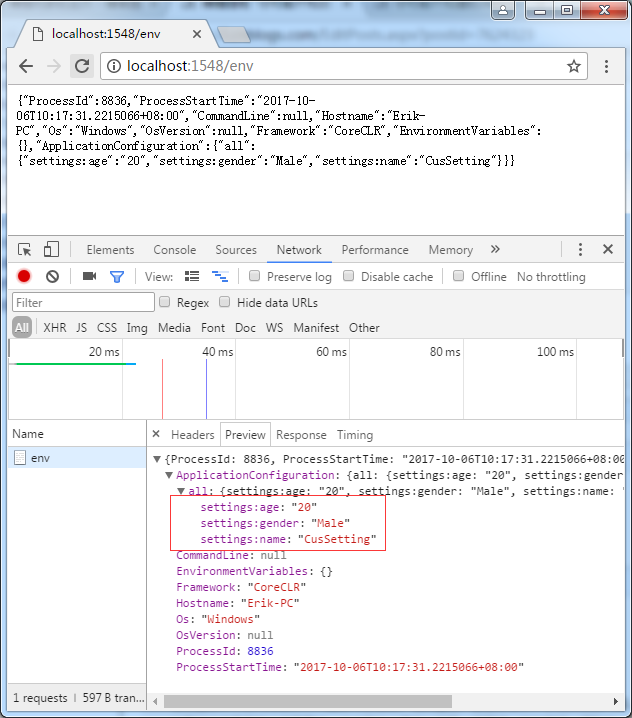
3. 可以设置配置文件不存在或失效时,程序不会被中止,该配置会被忽略。
如cussettings.json不存在或失效时:
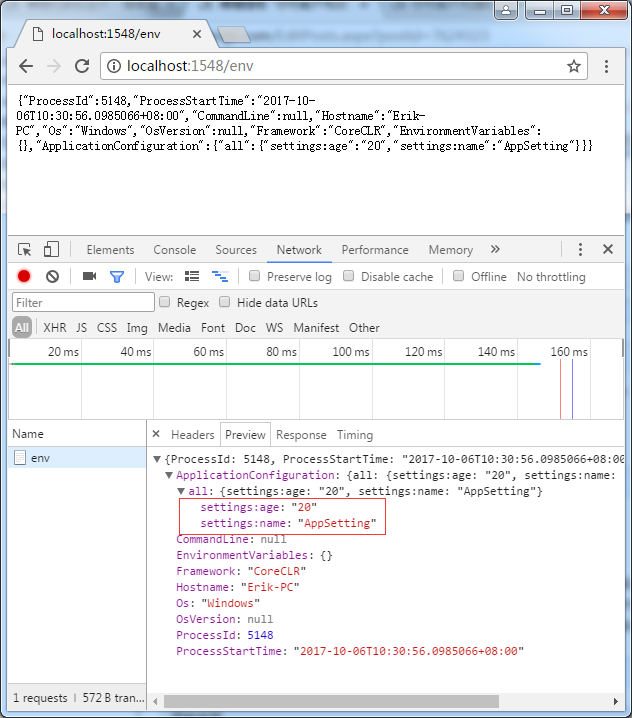
环境变量
1. appsettings.{env.EnvironmentName}.json
可以根据当前的环境变量设置读取对应的配置,来覆盖之前的配置,有点像Asp.Net的Web Transform,其中环境变量的key为:ASPNETCORE_ENVIRONMENT。
可以在四个地方设置该环境变量:
a) Visual Studio 2017中的launchSettings.json
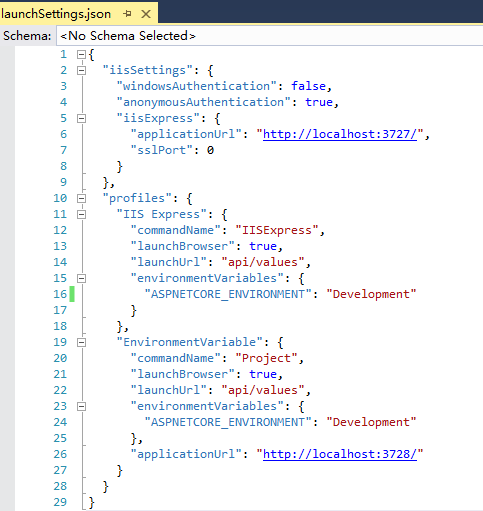
b) 操作系统的环境变量
Windows:

Linux:

c) Dockerfile
FROM microsoft/aspnetcore:1.1
COPY . /app
WORKDIR /app
EXPOSE 5000/tcp
ENV ASPNETCORE_URLS http://*:5000/
ENV ASPNETCORE_ENVIRONMENT Production
ENTRYPOINT ["dotnet", "EnvironmentVariable.dll"]
d) Docker启动指令
docker run --name {name} -e ASPNETCORE_ENVIRONMENT=Production ...
如:
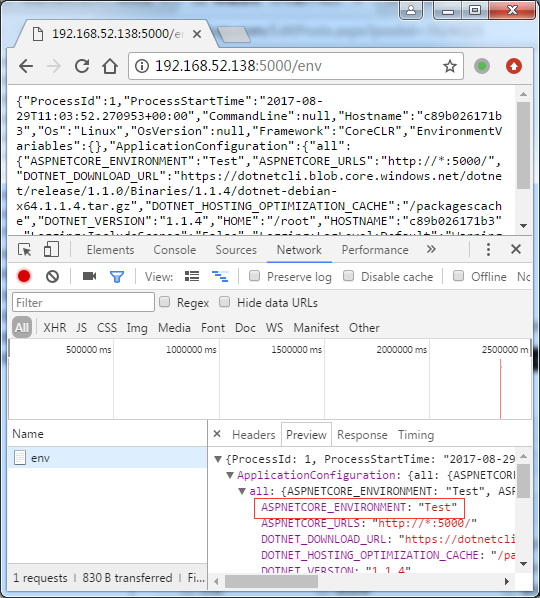
2. AddEnvironmentVariables()的作用
var builder = new ConfigurationBuilder() .SetBasePath(env.ContentRootPath) .AddJsonFile("appsettings.json", false, true) .AddJsonFile($"appsettings.{env.EnvironmentName}.json", true) .AddEnvironmentVariables();//作用? Configuration = builder.Build();
a) 读取系统的环境变量信息,这个应该大部分人都知道。
b) 覆盖之前的配置信息。
appsettings.json:
{ "settings": { "name": "AppSetting" } }
通过环境变量来覆盖settings:name:
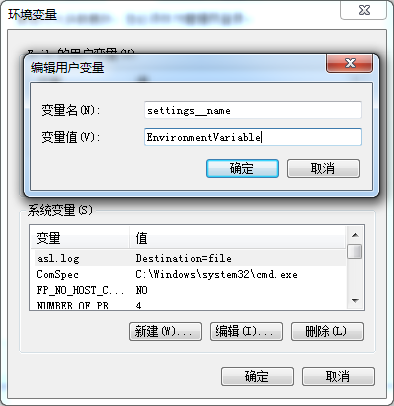
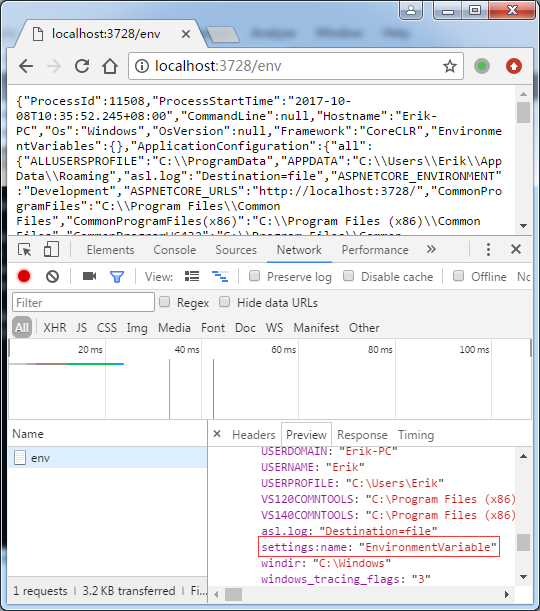
说明:这里是用控制台运行,因为操作系统的环境变量要对IIS Express生效,要重启vs2017,我懒!
另外环境变量使用两下划线(__)作为层次的分隔符,具体可参考EnvironmentVariablesConfigurationProvider的源码。

Spring Cloud Config Server
Config Server是Spring Cloud 配置管理的重要中间件,接下来,我们看一下.Net Core如何跟Config Server进行交互。
1. 准备配置文件,这里使用Git作为配置文件的Source,地址:https://github.com/ErikXu/.NetCore-Configuration
2. 获取安装包,这里使用Docker启动,因此,是拉取官方镜像:docker pull hyness/spring-cloud-config-server

3. 准备启动资源文件application.yml
info:
component: config service
server:
port: 8888
spring:
application:
name: git-config
profiles:
active: dev
cloud:
config:
server:
git:
uri: https://github.com/ErikXu/.NetCore-Configuration
searchPaths: Configs
4. 执行指令启动Config Server
docker run --name configsvr -it -d -p 8888:8888 -v /root/config-server/application.yml:/config/application.yml hyness/spring-cloud-config-server


5. 引入Nuget包
Install-Package Steeltoe.Extensions.Configuration.ConfigServer -Version 1.1.1
6. 准备appsetting.json
{ "spring": { "application": { "name": "foo" }, "cloud": { "config": { "uri": "http://192.168.52.142:8888", "validate_certificates": false, "env": "dev" } } }, "settings": { "name": "AppSetting"//会被Config Server的内容覆盖 } }
7. 引入Config Server

结果:
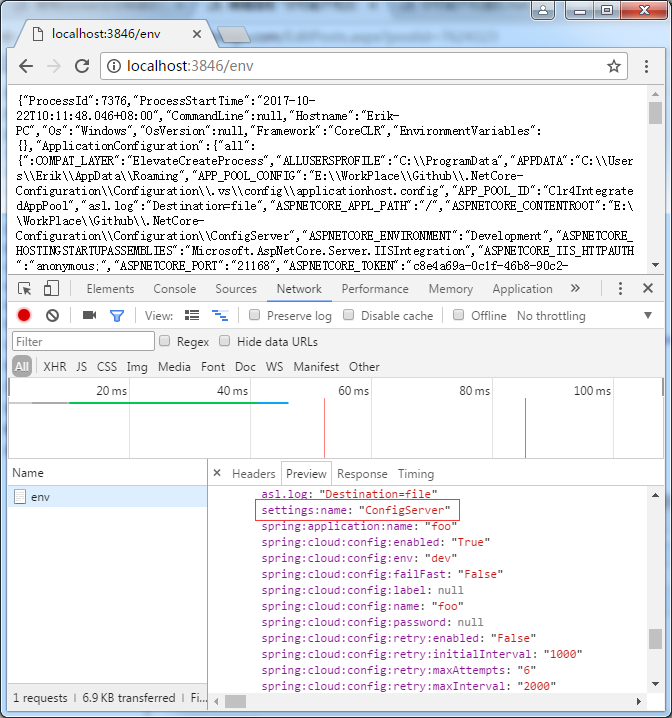
挂卷Volume
挂卷是docker的一种机制,可以把特定的目录或者文件挂载到docker容器的指定位置。配合.Net Core Configuration的机制,可以在appsetting.json中记录开发环境的配置,然后再指定一个待挂载的文件用于记录不同环境的配置,从而覆盖开发环境的配置,达到多环境适配的能力。
1. appsetting.json
{
"settings": {
"name": "AppSetting"
}
}
2. 指定一个待挂载的目录,但是在开发环境不存在此文件。
public Startup(IHostingEnvironment env) { var builder = new ConfigurationBuilder() .SetBasePath(env.ContentRootPath) .AddJsonFile("appsettings.json", false, true) .AddJsonFile($"appsettings.{env.EnvironmentName}.json", true) .AddEnvironmentVariables() .AddJsonFile("/configs/volume.json", true, true); //待挂载 Configuration = builder.Build(); }
3. 开发环境
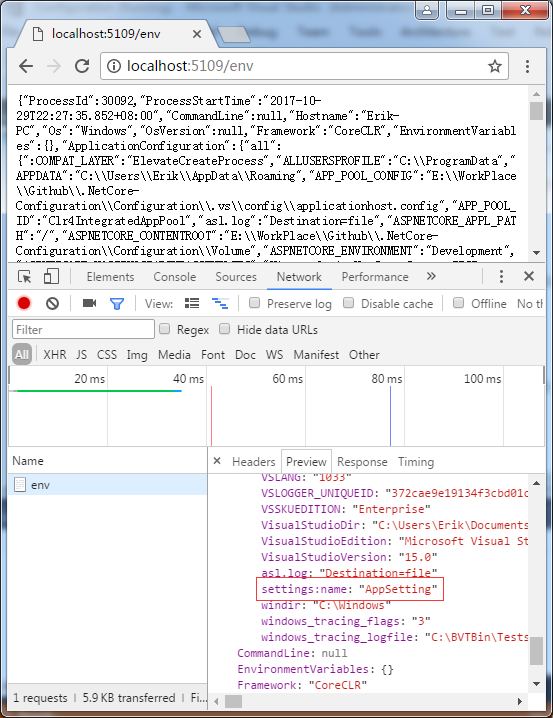
4. docker启动指令
docker run --name {name} -v {source}:{target} ...

注:如果有权限问题,需要先执行setenforce 0
5. 效果
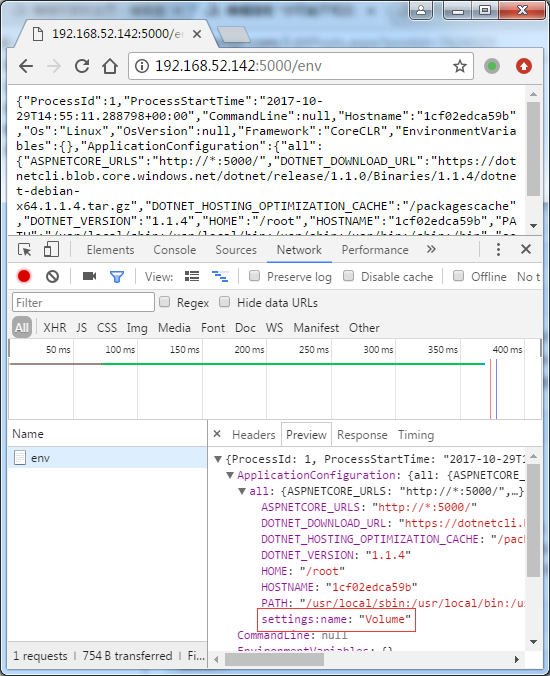
挂卷感觉跟appsettings.{env.EnvironmentName}.json很像,既然如此,为什么还要有挂卷呢?那是因为appsettings.{env.EnvironmentName}.json是.net core的机制,其它语言不一定会有,或者是另外的机制,docker的挂卷是服务各种语言的。.Net Core是很优秀的语言,它接收了很多业界的需求,也响应了docker挂卷的机制,在这一点上,.net的能力就相对较弱了。
Config Server vs Volume
Config Server是Spring Cloud体系的配置管理中心,而Kubernetes更多是使用Volume的方式(HostPath,Config Map,Secret)。
Config Server是运行时的配置管理,它会定期检测(心跳,2s)remote config的内容,如果内容更新,就刷新容器的配置信息。Volume是发布(更新)时的配置管理,在发布(更新)期间,就把配置信息挂载到容器中。
Config Server要自己保证其高可用,否则,Config Server挂了,会读取容器内的原始配置,Volume是把文件挂载到容器中,因此无中间件高可用要求,但要利用Kubernetes等保证发布更新时,配置挂载到了各个容器中。
Config Server具有一定的语言侵入性(必须要有驱动jdk或者sdk),Volume无语言侵入性。
Config Server只支持Yaml等少量配置文件类型,Volume支持各种配置文件类型。







 浙公网安备 33010602011771号
浙公网安备 33010602011771号